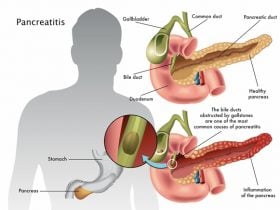Ascites

Ascites in liver cirrhosis [7] is the accumulation of fluid in the abdominal cavity and an increase in its volume, which occurs due to stagnation of blood and an increase in pressure of the venous system. Ascites is not an independent disease but a complication of cirrhosis, which greatly aggravates the course of the disease and worsens the prognosis for recovery. Statistics indicate that ascites will occur in 50% of patients within 10 years after they were diagnosed with cirrhosis. Some visible symptoms are a swollen belly and swollen feet.
The most common cause of ascites is cirrhosis, and other conditions include infection, heart failure, cancer and kidney failure. Rapid weight gain and noticeable abdominal distention can be seen in patients with ascites; other symptoms such as ankles swelling and breath shortness can also be noticed in some cases.
The continual progress of ascites often indicates that the liver is not working well. Reducing salt intake is an effective way to treat ascites; usually 4g-5g per day is recommended.













